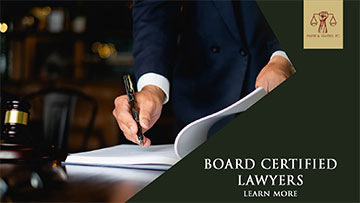Bicycle Accidents
Bicycle Accidents Attorney El Paso, TX
 Davie & Valdez P.C. is an avid cyclist and represents cyclists who have been injured. If you have been injured on a bicycle, call Davie & Valdez at 915-838-1100.
Davie & Valdez P.C. is an avid cyclist and represents cyclists who have been injured. If you have been injured on a bicycle, call Davie & Valdez at 915-838-1100.
What are the bicycle rules that apply to all cyclists in Texas?
All bicyclists must operate under Texas Motor Vehicle Laws while on public roadways, including stopping at stop signs, yielding to pedestrians in crosswalks, displaying proper illumination, and riding with the traffic flow on designated “One way” streets in designated bicycle lanes. University Police offers bicycle engraving services free of charge.
- 1. Bicycles should only be operated on streets, roadways, bike paths, routes and areas specifically designated for bicycle riding.
- 2. Bicycles and other non-motorized devices shall not be ridden into bicycle racks. Always dismount up arrival to the rack and place your bike in an available space.
- 3. All rules and procedures herein are applicable to all non-motorized devices.
- 4. In a shared-use areas, the bicyclists shall pass cautiously, after giving audible notice of passing to the pedestrian or bicyclists they are passing.
- 5. A bicycle is a vehicle and a person operating a bicycle has the rights and duties applicable to a driver operating a vehicle. All laws and signs that regulate the movement of vehicles upon the roadway also apply to bicycles. Therefore, a bicyclist should obey all traffic laws, signs, and signals. This includes stopping at all stop signs and all stop (red) lights.
- 6. A person operating a bicycle on a roadway who is moving slower than the other traffic on the roadway shall ride as near as practicable to the right curb or edge of the roadway. However, there are exceptions to this law. Under the following conditions the law allows bicyclists to take the full lane of travel when:
- 1. The person is passing another vehicle moving in the same direction.
- 2. The person is preparing to turn left at an intersection or onto a private road or driveway.
- 3. When there are unsafe conditions on the roadway, including fixed or moving objects, parked or moving vehicles, pedestrians, animals, or surface hazards that prevent the person from safely riding next to the curb or edge of the roadway.
- 4. The lane is of substandard width (less than 14 feet in width and not having a designated bicycle adjacent to that lane) making it unsafe for a bicycle and a motor vehicle to safely travel side by side.
- 7. A person operating a bicycle on a one-way roadway with two or more marked traffic lanes may ride as near as practicable to the left curb or edge of the roadway.
- 8. Persons operating bicycles on a roadway may ride two abreast. Persons riding two abreast on a laned roadway shall ride in a single lane. Persons riding two abreast may not impede the normal and reasonable flow of traffic on the roadway. Persons may not ride more than two abreast unless they are riding on a part of a roadway set aside for the exclusive operation of bicycles.
- 9. A person operating a bicycle shall ride only on or astride a permanent and regular seat attached to the bicycle.
- 10. A person may not use a bicycle to carry more persons than the bicycle is designed or equipped to carry.
- 11. A person operating a bicycle, coaster, sled, or toy vehicle or using roller skates may not attach either the person or the bicycle, coaster, sled toy vehicle, or roller skates to a streetcar or vehicle on a roadway.
- 12. A person operating a bicycle may not carry any object that prevents the operator from keeping at least one hand on the handlebars.
- 13. Bicyclists must use hand signals to signal their intent to stop, turn left, or turn right. The bicyclist must use the following signals:
- 1. Stop – Extend the left hand and arm downward
- 2. Left Turn – Extend the left hand and arm horizontally
- 3. Right Turn – Extend the left hand and arm upward, or extend the right hand and arm horizontally.
- 14. Every bike must be equipped with a brake capable of making a braked wheel skid on dry, level, clean pavement.
- 15. A person may not operate a bicycle at nighttime unless the bicycle is equipped with the following:
- 1. Headlamp – a lamp on the front of the bicycle that emits a white light visible from a distance of at least 500 feet in front of the bicycle.
- 2. Red Reflector / Red Lamp – A bicycle must be equipped with either a red reflector which is visible from a distance of 300 feet from the rest of the bicycle, or a red lamp visible from a distance of 500 feet from the rear of the bicycle.

EMAIL US
Client Review
“Words can’t express enough how grateful and extremely happy I am to have had Mr Roger Davie represent the most tragic experience in my life. Not only is he and his case manager Deborah Morales professional, but they are also a hard working determined team, who sincerely care! I am truly thankful!!”
Angela Serna
![]()
